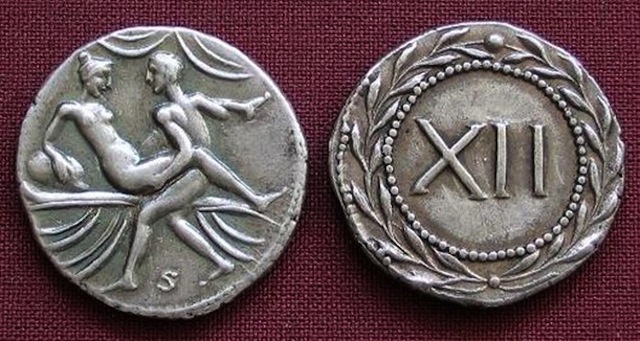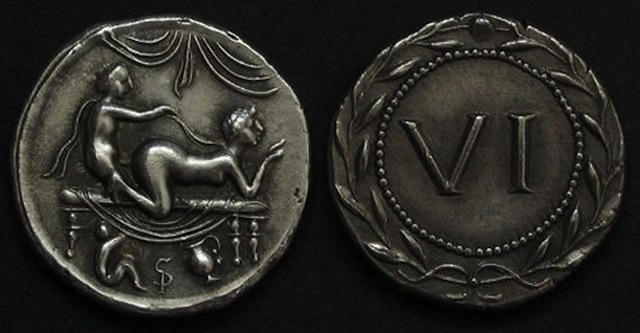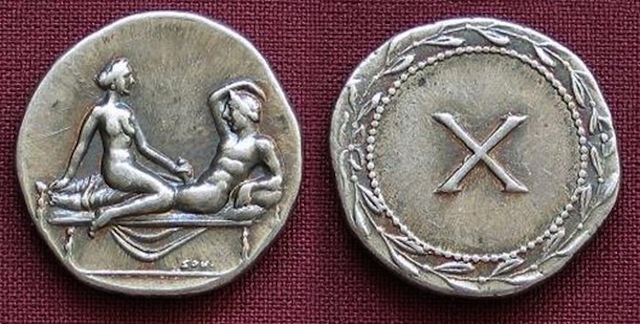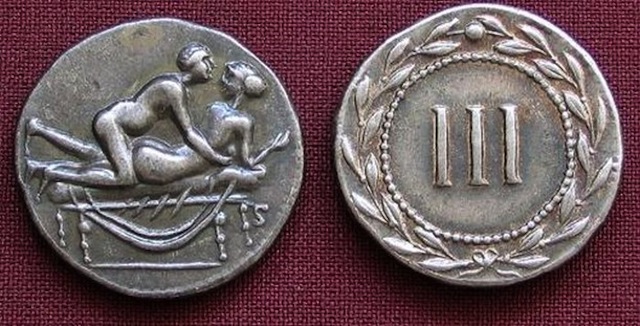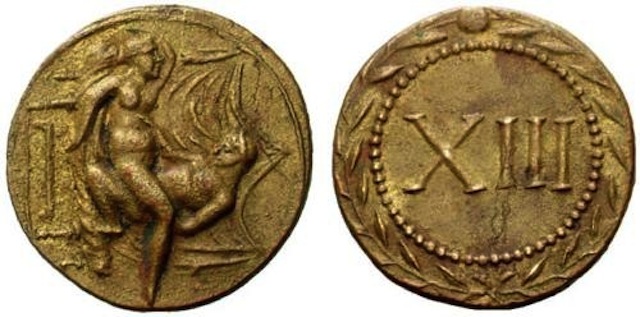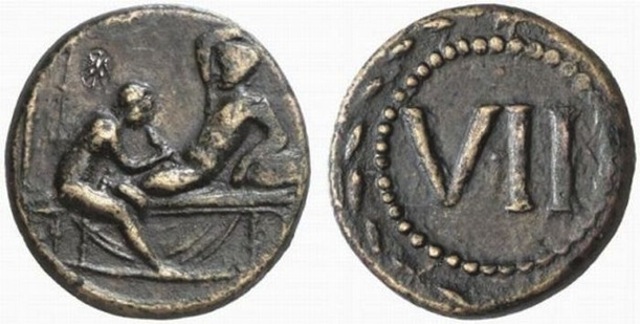Just been reminded that for a few decades in the first century CE, the Roman Empire was absolutely flooded with weird sex-coins and we& #39;re still not 100% why.
Later called spintriae (from a Greek slang word referring to male prostitutes), they were stamped on one side with depictions of a variety of sex acts and on the other with numbers from 1 to 16. And not one contemporary record mentions them or explains what they were used for.
They mostly date to Tiberius& #39; reign, and he famously minted no coins himself (whether out of sheer parsimony or a deliberate effort to control inflation, it& #39;s not known). One theory is they were minted by private lenders desperate to get *some* sort of coinage in circulation.
Cassius Dio, around a century later, coined the name and suggested that they were a sort of "sex token," that you bought in advance and could trade for services in a brothel or bath house.
You see, Augustus, who was surprisingly prudish for an Emperor, had come up with an ingenious way to try and ban sex work: he& #39;d made it illegal (indeed, treason and blasphemy) to pay for sex with a coin bearing the Emperor& #39;s likeness... which was all coins.
According to this theory, the ban had promptly inspired a trade in sex-coin-changers, who would sell the customers spintriae, then buy them back from the sex workers, taking a cut each time. Which I absolutely love, for sheer intelligence, adaptability and barefaced cheek.
Huh. I tried adding these tweets to the end of this thread, but I guess I took too long drafting them and the link broke. Here they are, and good morning! (I& #39;ve muted this thread as it was drowning my mentions  https://abs.twimg.com/emoji/v2/... draggable="false" alt="🙂" title="Leicht lächelndes Gesicht" aria-label="Emoji: Leicht lächelndes Gesicht">) https://twitter.com/dtmooreeditor/status/1303988867192717317">https://twitter.com/dtmooreed...
https://abs.twimg.com/emoji/v2/... draggable="false" alt="🙂" title="Leicht lächelndes Gesicht" aria-label="Emoji: Leicht lächelndes Gesicht">) https://twitter.com/dtmooreeditor/status/1303988867192717317">https://twitter.com/dtmooreed...

 Read on Twitter
Read on Twitter